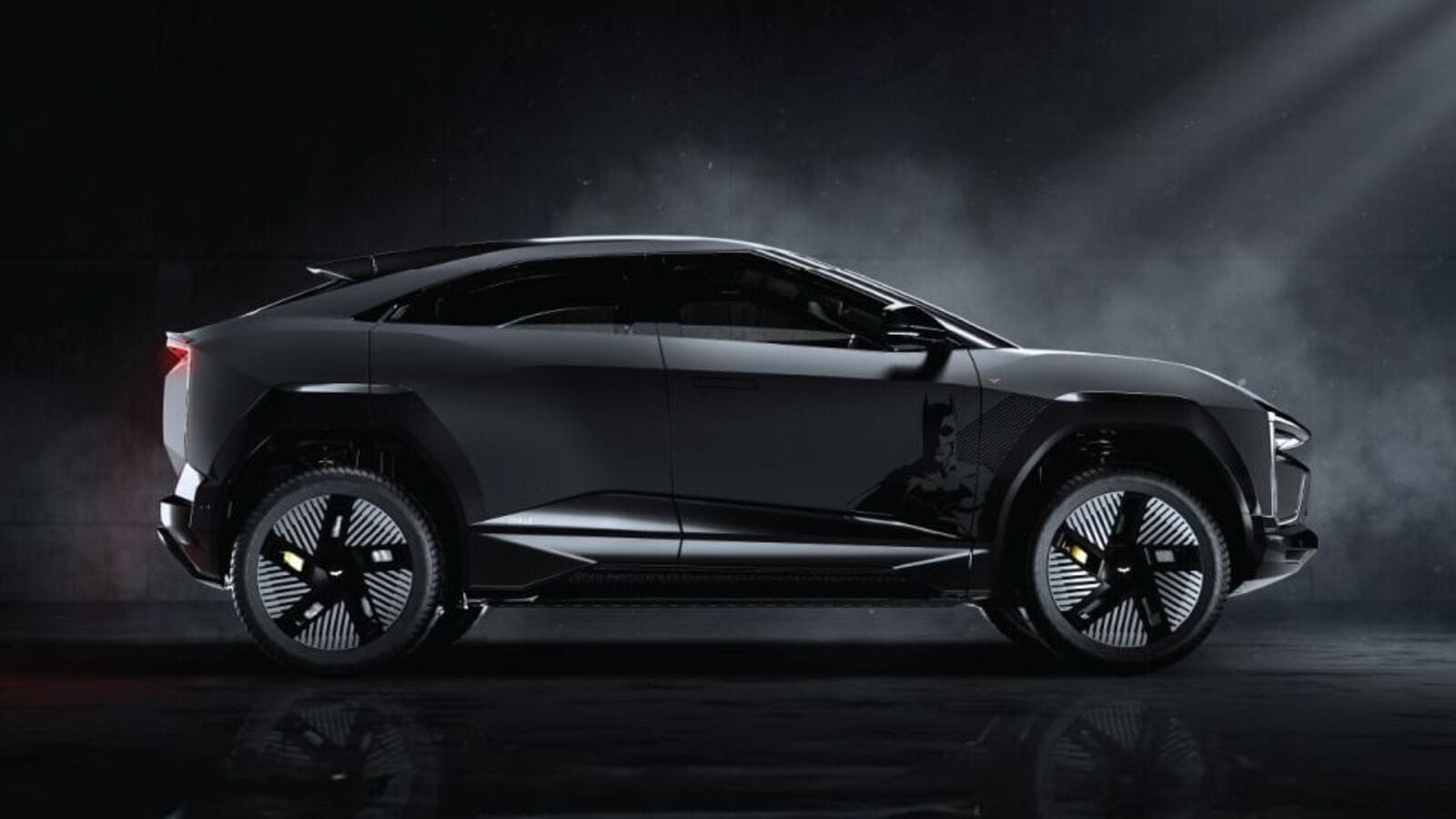21 August 2025

New-vehicle sales are expected to keep climbing in the US during August. However, not all is as it seems, as several unusual factors come into play. In its latest forecast, J.D. Power outlines the road ahead for the US automotive market.
Including retail and non-retail transactions, new-vehicle sales are projected to reach 1,483,005 in the US by the end of August. This equates to an 8.2% year-on-year increase. This year, August features 27 selling days, one less than the same month last year.
Comparing the sales volume without adjusting for the number of selling days translates to an increase of 4.4% from 2024. The seasonally-adjusted annualised rate (SAAR) for new-vehicle sales is expected to be 16.1 million units, up one million units from August 2024.
New-vehicle retail sales for August 2025 are projected to reach 1,283,151, a 7.8% increase from August 2024. Comparing the sales volume without adjusting for the number of selling days translates to an increase of 3.9%.
Unusual factors
‘August’s new-vehicle sales are expected to climb 8.2% from a year ago, including a 7.8% increase in retail volume. A strong result, although the results should be viewed in the context of several unusual factors that are distorting typical monthly sales trends,’ said Thomas King, president of the data and analytics division at J.D. Power.
First, federal credits of up to $7,500 (€6,438) on electric vehicles (EVs) will expire on 30 September. This will prompt many EV shoppers to accelerate purchases that otherwise would have occurred later this year. Consequently, the retail share of electric models in August is expected to reach an all-time high of 12%, compared with 9.5% a year ago.
Second, Labor Day lands in the August sales reporting period this year. The Labor Day weekend is typically one of the highest sales volume weekends of the year, powered by elevated manufacturer promotional activity and elevated discounts.
This year, manufacturers have kept incentives restrained due to tariffs. Normally, incentives as a percentage of the manufacturer’s suggested retail price (MSRP) increase by about half a point from January through to late summer. But this year they have slipped to 6.2% in August from 6.3% in January, underscoring the effect of tariff-related cost pressures.
Third, lease returns remain at historically low levels following the reduced leasing activity during the 2022 supply shortages. With fewer lease customers cycling back into the market, new-vehicle sales are facing added pressure compared with typical seasonal patterns.
Finally, from a total sales perspective, fleet deliveries are expected to reach 199,854 units in August, up 11.2%. This is primarily due to the low baseline recorded in August 2024. Fleet volume is forecast to represent 13.5% of total light-vehicle sales, an increase of 0.4 percentage points (pp) year on year.
Accelerating factors
‘August’s retail sales results point to solid new vehicle demand,’ said King. ‘The results are unquestionably inflated by shoppers accelerating their electric vehicle purchases to take advantage of Federal EV credits. But the sales pace for non-EVs remains robust, especially given the modest discounts available on those vehicles.’
The average new-vehicle retail transaction price in August is expected to reach $44,750, up $985 or 2.2% from August 2024.
The average manufacturer incentive per vehicle is on track to reach $3,105, a decrease of $7 from July. However, this is an increase of $38 from a year ago. Expressed as a percentage of MSRP, incentive spending is currently at 6.2%, a decrease of 0.1pp from a year ago.
Total retailer profit per unit, which includes vehicle gross plus finance and insurance income, is expected to be $2,202. This is down $7 from August 2024, but up $10 from July 2025. Total aggregate retailer profit from new-vehicle sales for this month is projected to be $2.7 billion, up 2.6% from August 2024.
The elevated sales pace, combined with strong average transaction prices, mean consumers are on track to spend nearly $54.1 billion on new vehicles this month. This is 5.3% higher than a year ago and the highest on record for August.
Financial figures
‘Higher prices translate to higher monthly loan payments,’ King pointed out. Average monthly finance payments in August are on track to reach $743, an increase of $13 from August 2024. This is the highest on record for August. The average interest rate for new-vehicle loans is 6.4%, a decrease of 38 basis points (one basis point is equal to 0.01%) from a year ago.
Finance loans with terms greater than or equal to 84 months are expected to reach 11.2% of finance sales this month. This is up 1.8pp from August 2024. The percentage of buyers with sub-650 FICO scores is trending towards 13.3%. This is up 2.8pp from last year and is the highest level for August since 2018 at 13.7%.
The average used-vehicle price is trending towards $29,100, up $375 from a year ago. This reflects the combination of several factors. First, a reduced supply of recent model-year used vehicles due to lower vehicle production during the pandemic. Second, fewer lease maturities, and third, manufacturers moderating discounts.
The rise in used-vehicle prices is good news for new-vehicle buyers, with average trade-in equity in August up $275 year over year to $8,030. That increase is partially offset by higher loan balances that exist on vehicles being traded in. The number of new-vehicle buyers with negative equity on their trade-in is expected to reach 25.3%. This is up 1.1pp from August 2024.
Multiple crosscurrents
‘September sales will be influenced by multiple crosscurrents,’ King said. ‘With the federal EV tax credit expiring at the end of the month, carmakers are expected to make a final, aggressive push to move remaining inventory.
‘At the same time, tariffs are shaping pricing and incentive strategies, adding an average cost of $4,275 per vehicle, though the effect varies significantly by model. So far, manufacturers have managed to keep price hikes relatively restrained, with some vehicles unaffected,’ he added.
Further adjustments are likely as the year unfolds, and new model-year introductions arrive. Many companies may hold back their most definitive incentive actions until the end of the year.
Sales details
- Fleet sales are expected to total 199,854 units in August, up 11.2% from August 2024. Fleet volume is forecast to account for 13.5% of total light-vehicle sales, up 0.4pp from a year ago.
- Internal-combustion engine (ICE) vehicles are projected to account for 72.2% of new-vehicle retail sales, down 5.6pp from a year ago.
- Plug-in hybrid vehicles (PHEVs) are on pace to make up 2.5% of sales, up 0.6pp from August 2024.
- Battery-electric vehicles (BEVs) are expected to account for 12.8% of sales, up 3.2pp.
- Full hybrids (HEVs) are projected to account for 12.6% of new-vehicle retail sales, up 2pp.
- US final assembly vehicles are forecasted to make up 52.5% of sales in August, up 2.4pp from a year ago.
- Trucks and SUVs are on pace to account for 82% of new-vehicle retail sales, up 2.1pp from August 2024.
Retail details
- Retail inventory levels are currently at 2.1 million units, up 18.6% from August 2024.
- The industry’s inventory days of supply is 58 days in August, up from 51 days a year ago.
- The average new-vehicle retail transaction price in August is expected to reach $44,750, up $985 from August 2024. Transaction price as a percentage of MSRP increased to 89.3%, down 0.4pp from a year ago.
- Retail buyers are on pace to spend $54.6 billion on new vehicles, up $3.2 billion from August 2024.
- Average incentive spending per unit in August is expected to reach $3,105, up $38 from August 2024. Incentive spending as a percentage of the average MSRP is expected to decrease to 6.2%, down 0.1pp from August 2024.
- Average incentive spending per unit on trucks and SUVs in August is expected to be $3,302, up $53 from a year ago. Meanwhile, the average spending on cars is expected to be $2,146, down $163 from a year ago.
- Leasing is expected to account for 23% of sales this month, down 1.1pp from a year ago.
Dealer details
- The average time a new vehicle remains in the dealer’s possession before sale is expected to be 51 days in August, up from 48 days a year ago.
- 29.5% of vehicles sold in less than 10 days in August, down 2.6pp from a year ago.
- Average monthly finance payments are on pace to be $743, up $13 from August 2024. The average interest rate for new-vehicle loans is expected to be 6.4%, down 0.38pp from a year ago.
- So far in August, average used-vehicle retail prices are $29,100, up $375 from a year ago. Trade-in equity is trending towards $8,030, which is up $275 from a year ago.
- 25.3% of trade-ins are expected to carry negative equity this month, an increase of 1.1pp from August 2024.
- Finance loans with terms greater than or equal to 84 months are expected to reach 11.2% of finance sales. This is up 1.8pp from August 2024.
Incentives driving purchases
‘The EV sector is past the midpoint of its final quarter with federal incentive support, and the coming twilight is causing consumers to speed up their purchases,’ said Tyson Jominy, senior vice president of data and analytics at J.D. Power. ‘August EV retail share will hit an all-time high of 12%, up 1.6pp from July and exceeding the previous peak of 11.2% set in December 2024.’
Driving this behaviour is incentive support from carmakers of $6,700 per unit, an increase of $1,500 from July. As a result, average EV transaction prices are down $2,500 to $44,300, which is now below the average of $45,700 for ICE-powered vehicles.
‘Despite initial concerns that EV inventory could be a bottleneck, inventory is now more likely an albatross. There are 197,000 EV units on the ground, down just 10,000 from July, and a robust 59-day supply.
‘Yet, like Cinderella’s magic, this brilliance faces a deadline. When the clock strikes midnight on 1 October, the $7,500 federal support vanishes, threatening to turn this inventory into costly pumpkins for carmakers and dealers. Look for incentives to increase throughout the third quarter as carmakers seek to ward off significantly more expensive sales costs in the last quarter.
Meanwhile, HEVs are slipping back as EVs steal the spotlight. Hybrid retail share is projected to dip to 12.6%, a 0.7pp drop from July, marking the first time since December 2024 that hybrids have fallen below the 13% mark. While PHEVs remain a very small part of the market, their market share is expected to increase slightly to 2.5%, up from 2.2% a month ago.



